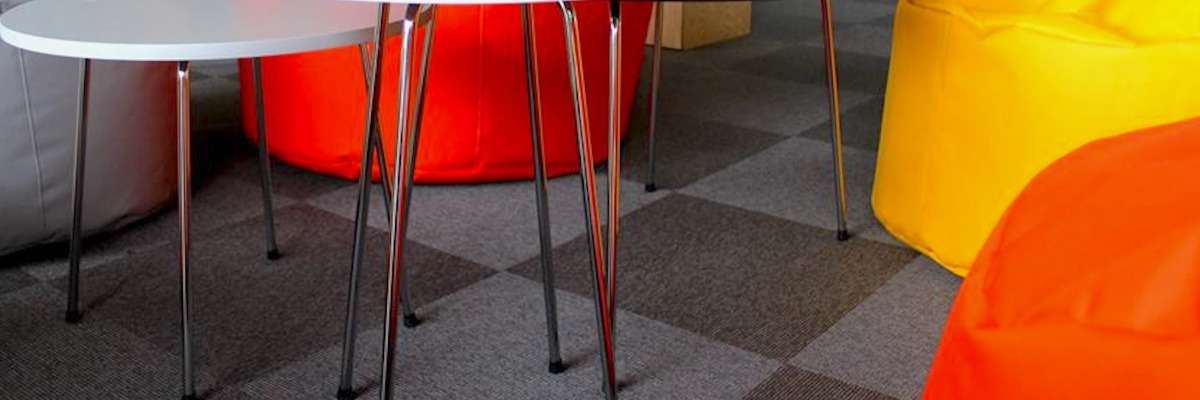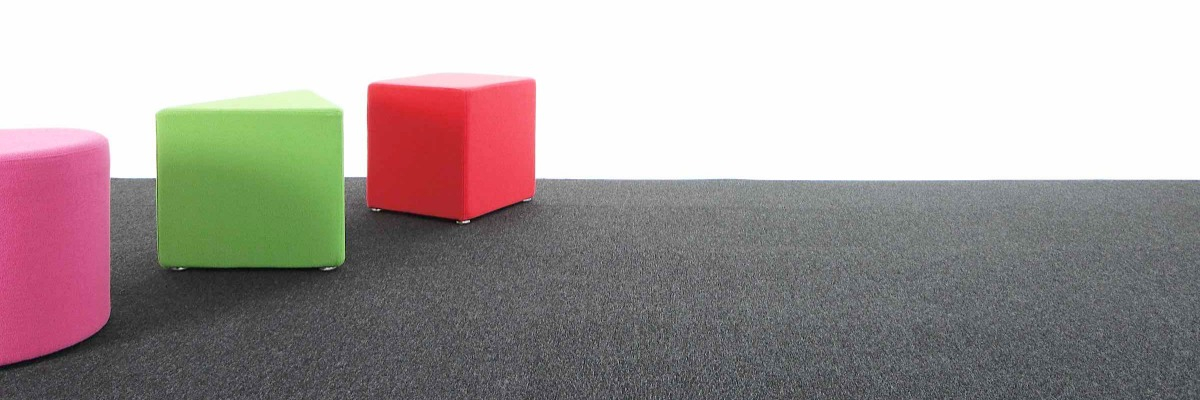
How to lay carpet tiles
Laying carpet tiles is actually easier than it sounds. Although the thought of getting started can be daunting. Our blog explains everything you need to know about laying carpet tiles, as well as a step-by-step guide for a detailed breakdown of the process.
Can I lay carpet tiles myself?
Carpet tiles are easy to lay yourself, as long as you know the process. To get started, there are some tools that you’ll need. These consist of:
- A tape measure
- A vacuum cleaner or sweeping brush
- A fixed-blade utility knife
- A metal ruler
- Double-sided tape
- Carpet tile adhesive
- Piece of chalk
Do carpet tiles need to be glued down?
Carpet tiles don’t NEED to be secured using glue. However, our advice is that if the area to be covered is large, then they should be secured using an adhesive. If you’re going to loose lay the tiles, then you can use double-sided tape to keep them in place instead.

Is it cheaper to lay carpet or carpet tiles?
Carpet tiles can be a more cost-effective option than traditional fitted carpet. This is because if a certain area needs replacing, you can simply replace one or two carpet tiles rather than the whole floor. You may also be able to save on installation costs by laying the carpet tiles yourself, whereas fitted carpet is more complex to install so you’d probably need to hire a professional.
What causes carpet tiles to curl?
One common issue that we see customers having with carpet tiles, is curling at the edges. This usually happens because there is too much tension in the carpet fibres, resulting in the carpet tiles not lining up as they should. The causes of this happening can be down to several reasons. For example, there could be an error in the manufacturing process, too much moisture in the concrete, or the application of the adhesive could be incorrect. If this happens upon application of your Paragon Carpet Tiles, please get in touch with us immediately.
A step by step guide for laying carpet tiles
Prepare your floor
Firstly, you’ll want to thoroughly prepare your floor where the carpet tiles will be installed. To do this, you must ensure that the area is clean and dry by using a vacuum cleaner or sweeping brush to remove any debris. Any existing floor coverings will need to be removed prior to the installation.
Prepare your carpet tiles
If you look on the back of your carpet tiles, you’ll find ‘pile direction arrows’ which essentially tell you which way the tiles need to face. To achieve a broader look in a room, the arrows need to all be facing the same way. However, if you’d like to achieve a more textured look, you can face the arrows in different directions.
Next, you’ll need to mark the centre of the room with a chalk line. The best way to check you achieve an even finish, is to lay carpet tiles loosely along the chalk line, and to each side of the room. This will determine whether the gaps at the edges of the room are even. Try to avoid thin gaps by doors, as this will look untidy.
Remember to use a glue
As we’ve mentioned earlier on in the blog, using an adhesive to stick your carpet tiles down will ensure they don’t move once they’ve been laid. Make sure to fully read the instructions on the back of your adhesive before using. Usually, the consistency is similar to PVA glue, and you’ll need to wait until it’s changed colour from white to transparent before you stick the tiles down.
Laying your tiles
Work outwards from your line in the centre, to the edges of the room. Take care to snugly fit each tile against each other to avoid trapping the carpet fibres.
Cutting your tiles
Once all of your carpet tiles have been laid, it’s time to cut around the edges of the room. For the neatest finish, we’d recommend using a cardboard template or a profile gauge. Always cut from the back of the tile, and take care not to catch your fingers!
Looking after your carpet tiles for years to come
Your new carpet tiles are designed to last for many years to come, but there are some steps you can take to ensure that they remain in the best possible condition.
Daily vacuuming is highly recommended – particularly in high-traffic areas. This not only ensures that your carpet tiles look clean and well-maintained, but this also helps to keep the fibres healthy. Any spillages or stains must be removed as soon as they occur to keep the carpet to ensure no long-term damage is done. Finally, arranging regular deep cleaning of your carpet tiles will help to lift deep dirt and debris, keeping your flooring looking fresh.
We hope that we’ve been able to help you install your new Paragon Carpet Tiles with ease! If you’d like more information about any of our carpet tile collections, get in touch with our sales team today for a bespoke consultation.


